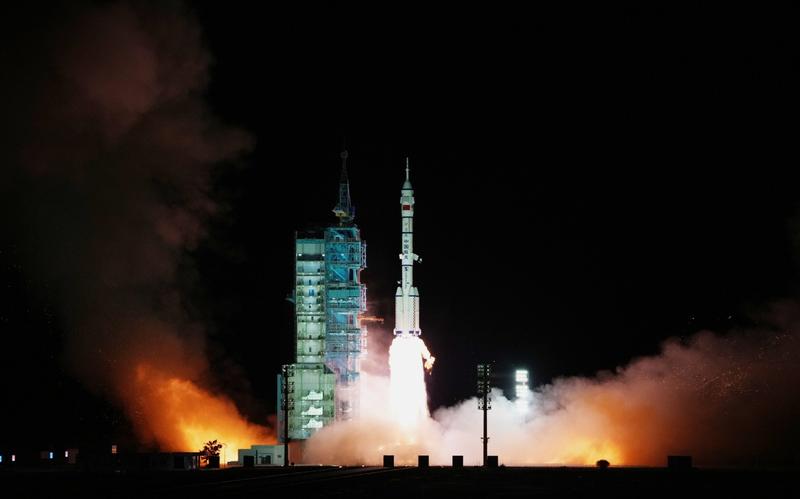 The crewed spaceship Shenzhou XIII, atop a Long March-2F carrier rocket, is launched from the Jiuquan Satellite Launch Center in Northwest China's Gobi Desert, Oct 16, 2021. (PHOTO / XINHUA)
The crewed spaceship Shenzhou XIII, atop a Long March-2F carrier rocket, is launched from the Jiuquan Satellite Launch Center in Northwest China's Gobi Desert, Oct 16, 2021. (PHOTO / XINHUA)
China's next-generation rocket to carry humans is expected to make its maiden flight around 2027, said a project manager.
Zhao Xinguo, a senior rocket designer and head of the China Academy of Launch Vehicle Technology's rocket development department, said the new rocket, which has yet to be named, is an important backbone in China's ambitious plan to place its astronauts on the moon.
"According to our schedule, all necessary conditions for the rocket's first launch mission will be ready in 2027," he said on Monday in Zhuhai, Guangdong province, one day ahead of the 14th China International Aviation and Aerospace Exhibition, the largest arms show in the country.
Zhao said that the new rocket will be about 90 meters tall, with a diameter of 5 meters, which means it will be almost twice as tall as the Long March 5, currently the biggest in China's rocket family.
With a core booster and two side boosters, the rocket's liftoff weight will be 2,187 metric tons, twice as heavy as the Long March 5.
The craft will be capable of carrying spacecraft weighing about 27 tons into an Earthmoon transfer trajectory, a gateway for lunar landing, or a 70-ton spacecraft into a low-Earth orbit, according to the project manager.
Hu Xiaojun, a rocket researcher at the academy, said the new heavy-lift rocket is intended for the country's future manned spaceflights, which will be carried out by a new-generation spaceship, and manned lunar explorations that Chinese scientists have been planning for a long time.
In the long term, Long March 9, China's super-heavy rocket that is also under development, will also join the ranks of the new rocket to transport construction materials to the moon to build a permanent base there, he said.
China's space authorities have a long-term plan to land astronauts on the moon and set up at least one science station there. They hope to use the manned missions to carry out scientific surveys and technological research, explore ways to develop lunar resources and strengthen the nation's space capabilities.
In another development, Zhao said the Smart Dragon 3, a new model of the solid-propellant carrier rocket, is scheduled to make its maiden flight in the coming weeks.
The first flight will be based on a mobile launch platform at sea, which means Smart Dragon 3 will become the second Chinese rocket, after the Long March 11, capable of making liftoff both on the ground and at sea, he noted.


